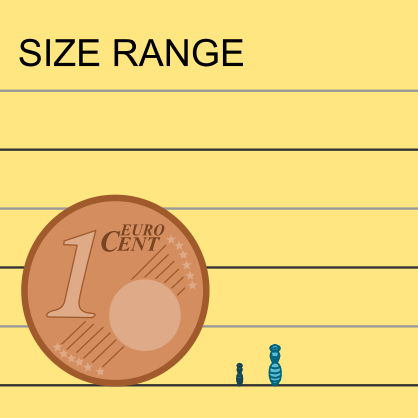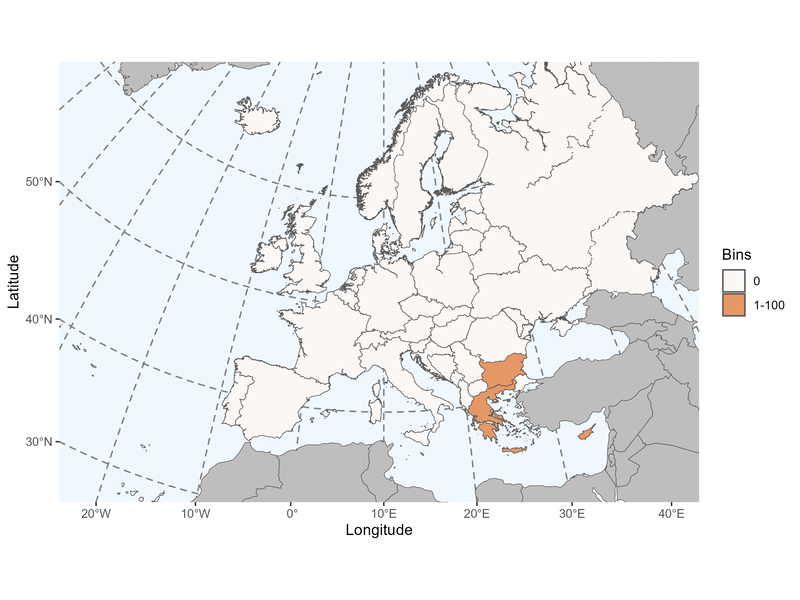Author: Engel, 2006
|
Type species: Parammobatodes gussakovskii Popov, 1951, monobasic.
|
Clade: Anthophila
Family: Apidae Subfamily: Nomadinae Tribe: Ammobatini |
|
Distinctive traits
|
Pictures of distinctive traits
|
Morphologically close genera, and how to distinguish them:
Parammobatodes have mandibles crossing less (up to 145°) and tend to be larger although with overlap (2.5 to 8mm), and have a jugal lobe.
Ammobatoides & Schmiedeknechtia species have an oval or pointed marginal cell, basal part of submarginal cell 1 is around twice as long as that of submarginal cell 2. Males have strongly converging eyes.
Clavipanurgus, Flavipanurgus, Panurginus, Panurgus & Simpanurgus species have a flat clypeus and a short-tongue morphology of mouthparts (short maxillary palpi).
- Chiasmognathus - Parammobatodes
Parammobatodes have mandibles crossing less (up to 145°) and tend to be larger although with overlap (2.5 to 8mm), and have a jugal lobe.
- Chiasmognathus - Ammobatoides & Schmiedeknechtia
Ammobatoides & Schmiedeknechtia species have an oval or pointed marginal cell, basal part of submarginal cell 1 is around twice as long as that of submarginal cell 2. Males have strongly converging eyes.
- Chiasmognathus - Clavipanurgus, Flavipanurgus, Panurginus, Panurgus & Simpanurgus
Clavipanurgus, Flavipanurgus, Panurginus, Panurgus & Simpanurgus species have a flat clypeus and a short-tongue morphology of mouthparts (short maxillary palpi).
General comments on Chiasmognathus species identification
Only one species known from Europe. However, its minute size and late discovery suggests that the genus is ill-known. The distribution and diversity of Chiasmognathus species will likely change in the future.
Only one species known from Europe. However, its minute size and late discovery suggests that the genus is ill-known. The distribution and diversity of Chiasmognathus species will likely change in the future.
Chiasmognathus species found in Europe (Ghisbain et al. 2023):
Chiasmognathus orientanus (Warncke, 1983)
Chiasmognathus orientanus (Warncke, 1983)
Page contributors:
You noticed a mistake? You have a suggestion to improve this page?
Don't keep it to yourself, contact us and become a contributor to IDmyBee!
References used to write this page:
- Adrien Perrard (Dec. 2023)
- Adrien Perrard (Dec. 2019)
You noticed a mistake? You have a suggestion to improve this page?
Don't keep it to yourself, contact us and become a contributor to IDmyBee!
References used to write this page:
- Ghisbain, G., Rosa, P., Bogusch, P., Flaminio, S., Le Divelec, R., Dorchin, A., Kasparek, M., Kuhlmann, M., Litman, J., Mignot, M., Müller, A., Praz, C., Radchenko, V.G., Rasmont, P., Risch, S., Roberts, S.P.M., Smit, J., Wood, T.J., Michez, D. & Reverte, S. (2023). The new annotated checklist of the wild bees of Europe (Hymenoptera: Anthophila). Zootaxa, 5327(1), 1-147.
- Engel, M. 2006. A new genus of minute ammobatine bees (Hymenoptera: Apidae). Acta Entomologica Slovenica, 14(2), 113-121.
- Michener, C.D. 2007. The Bees of the World, 2nd Edition. The John Hopkins University Press, Baltimore.
- Michez D., Rasmont P., Terzo, M., Vereecken, N. 2019. Abeilles d'Europes. Hymenoptères d'Europes, Volume 1. N.A.P. Editions.
- Nieto, A., Roberts, S. P., Kemp, J., Rasmont, P., Kuhlmann, M., García Criado, M., ... & Michez, D. 2014. European red list of bees. Luxembourg: Publication Office of the European Union, 98. (IUCN 2014)
- Rasmont, P., Devalez, Jelle, Pauly, A., Michez, D. & Radchenko, V.G. 2017. Addition to the checklist of IUCN European wild bees (Hymenoptera: Apoidea). Annales de la Société entomologique de France 53: 17-32.



